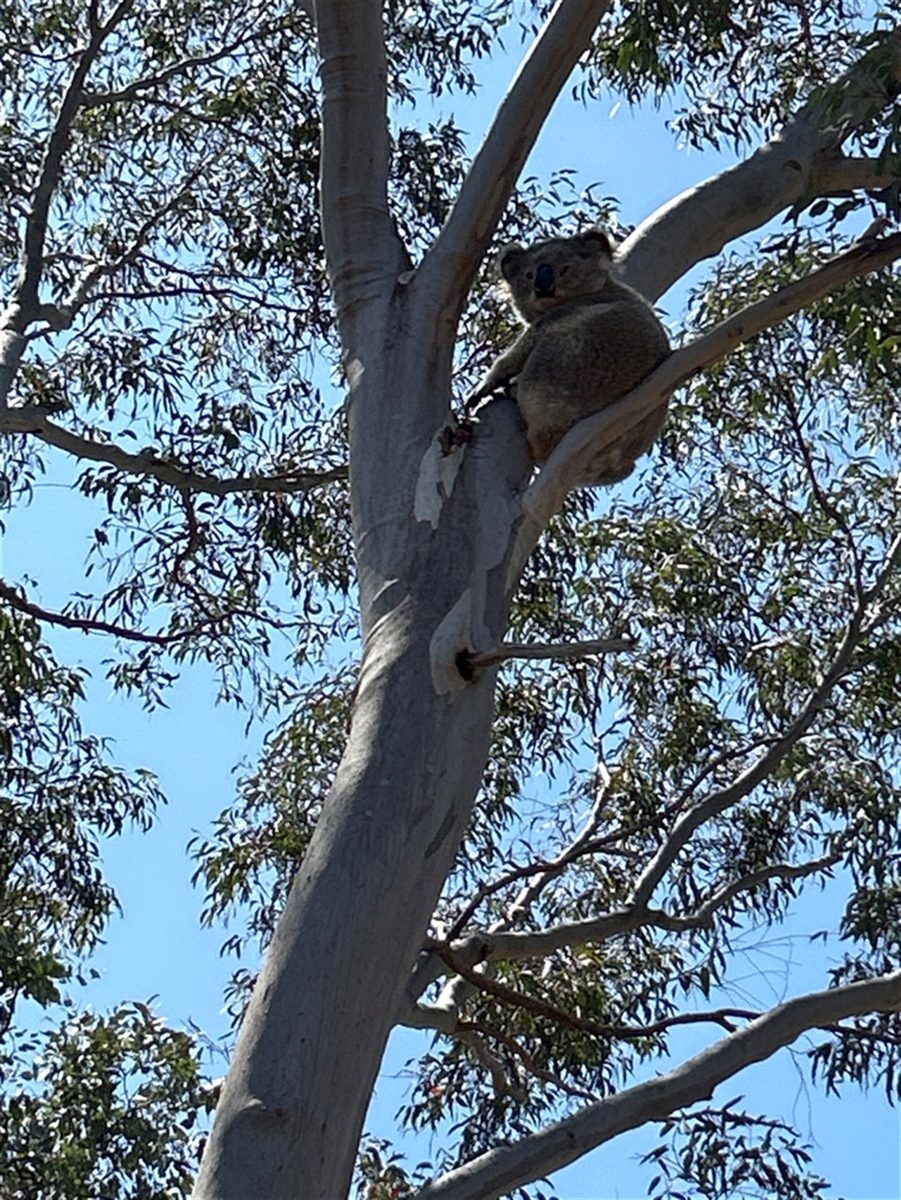
The koala was spotted in grassy woodland in Jacka, Gungahlin. Photo: NatureMapr.
A koala has been spotted in the wild in the ACT for the first time in four years, possibly throwing a spanner in the works for development of Canberra’s northernmost suburb.
A member of the public spotted the furry marsupial in a grassy box-gum woodland in Jacka in Gungahlin and posted the photo to online citizen science platform NatureMapr.
The exact location has been suppressed for the animal’s protection, but it’s within an area slated for a major housing project.
Around 20 km north of Civic, and with Taylor on one side and Bonner on the other, Jacka will be home to nearly 1800 people when complete. It will also be among Canberra’s first battery-powered suburbs, with plans to install a 250 kW ‘community battery’ powered by solar panels.
The koala has been listed as endangered in the ACT since 2023, with the last sighted in 2021 in Oaks Estate. A few years earlier in 2017, one was also spotted crossing the road near Pialligo Avenue near the Canberra Airport.
Prior to that, the last time wild koalas were recorded in the ACT was in 1992, in the Kowen Escarpment Nature Reserve.
Elsewhere, sightings were recorded across the border near Sutton last year, and acoustic monitoring in 2022 picked up “bellows” from male koalas in the vicinity of Googong and in southern ACT.

The full photo showing some of the background. Photo: NatureMapr.
Dr Kara Youngentob, a koala habitat expert from the ANU Fenner School of Environment and Society, says it’s unlikely the Jacka koala is simply passing through.
“Koalas don’t have a lot of fat reserves, and they have a really low-energy diet, so they can’t travel very far without feeding, so it would be in an area where it could eat,” she explains.
“Koalas also don’t disperse often – it’s generally a once-in-a-lifetime thing, if at all, and some koalas stay in the areas they were born their entire lives.”
Dr Youngentob thinks the koala may “represent one of what is possibly multiple individuals living in that area”.
“When I went on-site to look at the area – koalas have two thumbs and make really distinctive marks on trees when they climb them – and we found these marks on the trees, and they were a variety of ages … so the koala or others like it have been in the area for a while.”
The Conservation Council ACT says the conclusion is a no-brainer – further development of Jacka has to stop.
“This sighting is incredible,” director Simon Copland says, adding, “We have to take this sighting very seriously”.
“In all my life living in Canberra I have hardly ever heard of koala sightings … This sighting shows that it has real potential to be an important piece of habitat for bringing back koala numbers into the ACT.
“This development clearly needs to be stopped. Canberra loves to call itself the bush capital, but we cannot continue to do so while continuing to bulldoze important habitat for native species.”
He argues it also makes a case for more “gentle densification” and less expansion of the ACT’s urban footprint.
“The most sustainable way to continue to grow our city is through gentle densification. This will stop the bulldozing of key pieces of our bush, reduce carbon emissions as people are less reliant on cars, and help create more vibrant, exciting communities.”

Grassland at the site of Jacka, Gungahlin. Photo: James Coleman.
ACT Senator David Pocock has also picked up the koala’s case, saying it’s “something I will be pushing hard with the ACT and federal governments”.
“While we desperately need more housing in the ACT, and this is something I have been pushing, we need to locate it in areas – including through more infill – that won’t damage endangered species habitat,” he says.
“I believe that the presence of an endangered species that is presumed locally extinct should now trigger a Federal Environment Protection and Biodiversity Conservation assessment.”
The ACT Government’s Environment, Planning and Sustainable Development Directorate (EPSDD) has confirmed the sighting and told Region its team of conservation officers, researchers and land custodians will “progress environmental due diligence and survey activities” to ensure the koala is protected.
This includes working out whether it originates from a population over the border in NSW or is in a “corridor of habitat” used regularly by the species.
“The outcome of the environmental due diligence and survey work will guide and inform the next steps by the ACT Government, including the planned future development,” a spokesperson said.
“The Conservator of Flora and Fauna requests the Canberra community avoid specifically searching for the Gula [Ngunnawal name for the koala] as this may cause harm and disrupt sensitive monitoring activities.”
Original Article published by James Coleman on Riotact.






